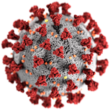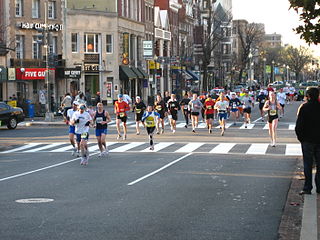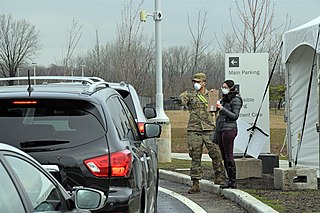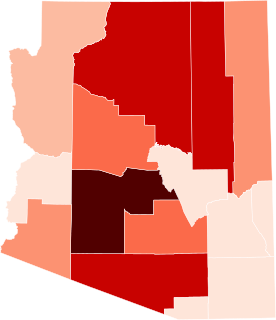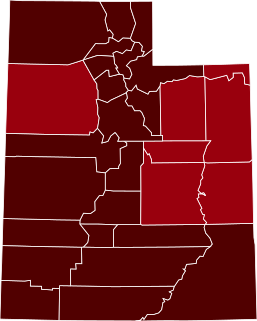March
March 1–4
On March 2 at 9:00 a.m., the D.C. Emergency Operations Center was activated at an Enhanced Watch status, as per the executive order signed on February 28. [4]
On March 3, Mayor Bowser, D.C. Department of Health and the D.C. Homeland Security and Emergency Management Agency held a public briefing on the coronavirus and the District's "monitoring, preparation, and response" to it. [5]
March 5–7
On March 7, the first two cases of COVID-19 in Washington, D.C. were confirmed. The first case was a rector at Christ Church Georgetown who had not traveled outside the United States recently or had contact with another infected coronavirus patient. He participated in church services on February 23 and March 1. The rector felt better initially, but his condition deteriorated to the point of hospitalization when it was confirmed he had coronavirus. After it was confirmed the rector contracted the virus, the church canceled services indefinitely. The second case was a Nigerian national who traveled to D.C. and went to a hospital in Maryland for treatment. Although the second man was being treated at a Maryland hospital, he was counted as the District's second case by the Centers for Disease Control and Prevention (CDC). [6] [7]
March 8–10
On March 9, School Without Walls, a public school in Foggy Bottom, was closed by District of Columbia Public Schools (DCPS) for a full-day deep cleaning and disinfecting by a third-party contractor after an employee was exposed to COVID-19 the week before. The employee tested negative and entered a two-week quarantine. DCPS chancellor Lewis Ferebee announced the closing over Twitter the previous day. [8]
Three more coronavirus cases in D.C. were confirmed the night of March 9, including an attendee of Christ Church Georgetown. D.C. officials recommended a two-week self-quarantine per CDC guidelines for anyone who attended Christ Church on February 24 or between February 28 and March 3. At that time, $1.5 million had been allocated to the pandemic response by the D.C. government. [9]
On March 10, George Washington University announced classes will be moved online after spring break, starting on March 23 and continuing until at least April 5. In addition, all residential students were expected to no longer be living on campus beginning March 21. It was stated that an opening date would not be announced until the end of the instructional continuity period when a decision for the rest of the semester would be made. [10] [11]
Also on March 10, Georgetown Day School, a private school, closed indefinitely and began a deep clean citing concerns about community members affiliated with Christ Church Georgetown. [12]
March 11–14
On March 11, Maria Cantwell, a U.S. senator from Washington state, closed her D.C. office due to one of her aides testing positive for the virus. [13]
Georgetown University announced that it would be moving to virtual learning entirely beginning on March 16, and while campus would remain open and key services would remain accessible the university strongly suggested that students return to their homes. [14]
On March 12, the United States Capitol, the White House, and the United States Supreme Court Building closed to most of the public until April after several offices closed and multiple lawmakers went into precautionary quarantines. [15]
On March 13, DCPS announced that they will cancel classes until April 1, implementing online distance learning. [16] Also on March 13, the Washington Metropolitan Area Transit Authority (WMATA) escalated its operations to level 3 of its pandemic flu plan, announcing that service on the Washington Metro would be reduced to one train every 12 minutes from Monday to Saturday and one train every 15 minutes on Sunday beginning on March 17. In addition, Metrobus service would change to a Saturday supplemental schedule on weekdays beginning on March 17. [17] [18]
Mayor Muriel Bowser held a press conference, announcing that gatherings of people over 60 years of age or with preexisting health issues would be limited to 10 people. The restriction would not apply to residences, schools, or places of work. For populations not at-risk the government promoted social distancing measures to limit the spread of the virus. [19]
On March 14, Mayor Bowser issued a statement confirming 6 more positive cases in Washington, D.C., bringing the total number of cases up to 16. [20]
March 15–16
On March 15, Bowser's office announced one more positive case in Washington D.C., bringing the total cumulative number of cases to 17. The patient in this case is a 38-year-old woman who came into contact with another case. [21]
The Hill Restaurant Group (HRG) said on March 16 they would comply would restrictions on bars and restaurants ordered by Mayor Bowser on March 15. Tom Johnson, the managing director of the group, had earlier said he would ignore the order, saying it would force his company into bankruptcy. [22]
On the evening of March 16, Mayor Bowser's office released an update that confirmed five more positive cases of coronavirus in the District. The patients involved were a 23-year-old man, a 42-year-old woman with a history of travel to Europe, a 54-year-old woman, a 54-year-old man, and a 56-year-old man. These five cases brought the cumulative number of cases in D.C. to 22. [23]
March 19–20
As of March 19, the number of confirmed cases sharply jumped to 71 as the supply of tests was expanded, an increase of 32 over one day. [27] This includes two more DC FEMS members and an eight-year-old. [28]
The same day, Washington Metro closed the Smithsonian and Arlington Cemetery stations until further notice. Metro ridership reduced by 85% due to the pandemic, leading to general manager Paul Wiedefeld submitting a request to Congress for emergency funding. [29]
On March 20, Mayor Bowser announced the first death related to COVID-19 in the District, a 59-year-old male, Deacon Brother John-Sebastian Laird-Hammond, OFM, a Franciscan friar and permanent deacon, a native of Minonk, Illinois, with underlying medical conditions, specifically a multi-year battle with a type of leukemia who had been undergoing cancer treatments and was therefore more vulnerable to the virus. [30] The number of cases rose to 77. [1]
DCPS extended the school shutdown to April 24, meaning classes would be scheduled to resume on Monday, April 27. In preparation for the beginning of distance learning on March 24, the DCPS Distance Learning platform was released, publicly accessible at dcps.instructure.com/courses/179580 . Certain schools would continue to provide lunch on weekdays. [32]
March 21–22
On March 21, the D.C. government, operating through the Metropolitan Police Department and the National Park Service announced several road closures around beginning on March 22, 7:00 AM to 8:00 PM, in an effort to reduce congregation of tourists around monuments during the National Cherry Blossom Festival. These crowds had not been conforming to social distancing guidelines and thus presented a possible vector for the transmission of coronavirus. [33] [34] The DC Department of Parks and Recreation closed all of its facilities including parks, playgrounds, and athletic fields. Only dog parks remained open. [35]
The same day, Metrobus announced reduced operation from 325 routes to only 20 high-use corridors. Real-time bus data would no longer be available and drivers may bypass stops in order to observe social distancing guidelines on buses. WMATA said it hoped to restore some routes with limited operation hours soon. [36]
The number of cases as of 7:30 PM that day was 98. [1]
On March 22, the second death due to COVID-19 was reported in the District, a 65-year-old woman with underlying medical conditions. [37]
The number of cases as of 7:00 PM that day was 116. [1]
March 23–24
On March 23, Mayor Bowser and Chief Financial Officer Jeffrey DeWitt announced that the 2019 tax filing deadlines would be pushed to July 15, instead of the upcoming April 15. [38] The Mayor also urged D.C. residents to remain at home except for "essential activities," clarifying that she would not be issuing a shelter-in-place order as of now. [39]
On that day, Mayor Bowser also commissioned Republic Restoratives Distillery and Compass Coffee, two locally owned companies, for the production of 2,000 US gallons (7,600 l; 1,700 imp gal) of hand sanitizer (1,000 US gallons (3,800 l; 830 imp gal) each) for use by D.C. government workers and emergency responders. [40]
As of 7:00 PM that day, the number of cases was 137. [1]
March 25
On March 25, the third death in Washington, D.C. was a 75-year-old female with underlying health conditions. [41]
March 30
On March 30, Mayor Bowser announced a stay-at-home order that would go into effect on April 1. The order stated that residents may only leave their residences to engage in essential activities, including obtaining medical care that cannot be provided through telehealth and obtaining food and essential household goods, to perform or access essential governmental functions, to work at essential businesses, to engage in essential travel and to engage in specific recreational activities that the order defined. [42]
Anyone found to be violating the order would be charged with a misdemeanor and subject to a $5,000 fine and/or 90 days in prison. Bowser said, "Staying at home is the best way to flatten the curve and protect yourself, your family, and our entire community from COVID-19." [43]
On the same day, Maryland's Governor Larry Hogan and Virginia's Governor Ralph Northam issued similar stay-at-home orders (see 2020 coronavirus pandemic in Maryland and in Virginia). However, the penalties for violating those orders were different from those in the District. [44]

